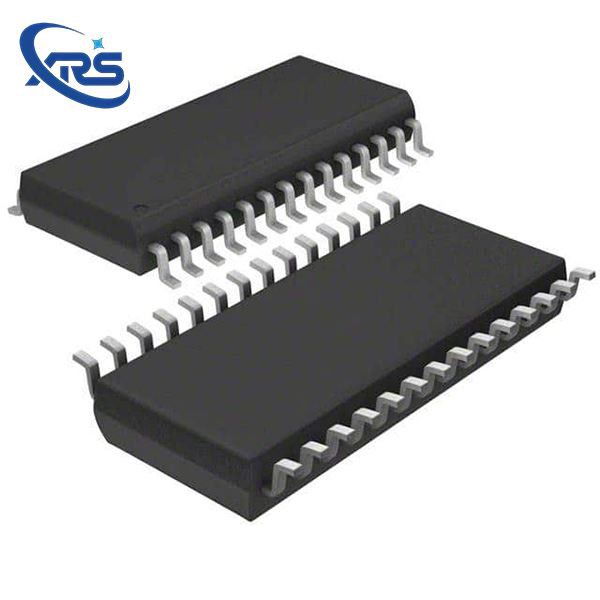What are the electrical characteristics of 74hc595d 118?
Leave a message
Hey there! As a supplier of the 74HC595D 118, I'm super stoked to chat about its electrical characteristics. This little chip might not be the most well - known in the market, but it's got some pretty cool features that make it a great choice for a bunch of applications.
First off, let's talk about the power supply. The 74HC595D 118 operates over a wide range of power supply voltages. It can work with a supply voltage (VCC) anywhere from 2V to 6V. This wide range is a huge plus because it gives you flexibility when it comes to powering your circuit. Whether you're using a small battery - powered device or a more traditional power source, this chip can handle it. For example, if you're building a small, portable gadget that runs on a couple of AA batteries, the 2V lower limit allows it to function properly. On the other hand, if you've got a more stable power supply with a higher voltage, up to 6V, the chip can still operate without a hitch.
Now, let's get into the input and output characteristics. The inputs of the 74HC595D 118 are designed to be TTL - compatible. This means that they can easily interface with other TTL - level devices. If you're using other chips or components in your circuit that operate at TTL levels, you don't have to worry about any complex level - shifting circuits. The inputs can directly receive signals from these TTL devices, which simplifies the overall design of your circuit.
When it comes to the outputs, the 74HC595D 118 has 8 - bit serial - in, parallel - out shift registers. This is a really useful feature for applications where you need to control multiple outputs with just a few input lines. For instance, if you want to control a series of LEDs or small motors, instead of having to connect a separate control line to each one, you can use the serial - in feature to send data to the chip, and then it will output the data in parallel to the connected devices. This not only saves on the number of pins on your microcontroller but also makes the wiring of your circuit much neater.
The output current drive capability is also something worth mentioning. The chip can sink and source a decent amount of current. It can sink up to 35mA per output pin and source up to 25mA per output pin. This is sufficient for driving many common loads like LEDs, small relays, or low - power sensors. For example, if you're using standard 5mm LEDs, which typically require around 10 - 20mA to light up, the 74HC595D 118 can easily drive them without the need for additional current - boosting circuits.
Another important characteristic is the propagation delay. The propagation delay is the time it takes for a signal to travel through the chip from the input to the output. In the case of the 74HC595D 118, the propagation delay is relatively low. This is crucial in applications where real - time response is important. For example, in a high - speed data - transfer system or a control system where quick reaction times are needed, a low propagation delay ensures that the signals are processed and outputted in a timely manner.
Now, let's talk about how the 74HC595D 118 compares to other related components in the market. There are other shift register chips out there, but the 74HC595D 118 stands out because of its combination of features. It offers a good balance between power consumption, performance, and cost. If you're looking for a more powerful option, you might consider something like the IC Line Driver, which is designed for more demanding line - driving applications. However, if you're working on a budget - friendly project with moderate requirements, the 74HC595D 118 is a great choice.
In some audio - related projects, you might also come across components like the LM3886TF, which is a high - power audio amplifier. While the 74HC595D 118 isn't an audio - specific chip, it can still be used in audio projects for tasks like controlling the volume or switching between different audio sources. And speaking of volume control, the Volume Control IC is another option for fine - tuning audio levels, but the 74HC595D 118 can be used in a more general - purpose way to implement simple volume - switching functions.


The 74HC595D 118 also has some built - in protection features. It has internal protection against electrostatic discharge (ESD). This is important because ESD can damage electronic components during handling and operation. With the built - in ESD protection, you can be more confident that the chip will survive normal handling and environmental conditions without getting damaged.
In terms of packaging, the 74HC595D 118 comes in a standard 16 - pin DIP (Dual In - Line Package) or SOIC (Small Outline Integrated Circuit) package. The DIP package is great for prototyping on breadboards because it's easy to insert and remove the chip. On the other hand, the SOIC package is more suitable for printed circuit board (PCB) designs where space is a concern.
If you're in the market for the 74HC595D 118 or have any questions about its electrical characteristics and how it can fit into your project, I'd love to hear from you. Whether you're a hobbyist working on a small DIY project or a professional engineer designing a large - scale product, I can provide you with high - quality 74HC595D 118 chips at competitive prices. Just reach out, and we can start a conversation about your specific needs.
References:
- Datasheet of 74HC595D 118
- General knowledge of digital electronics components






